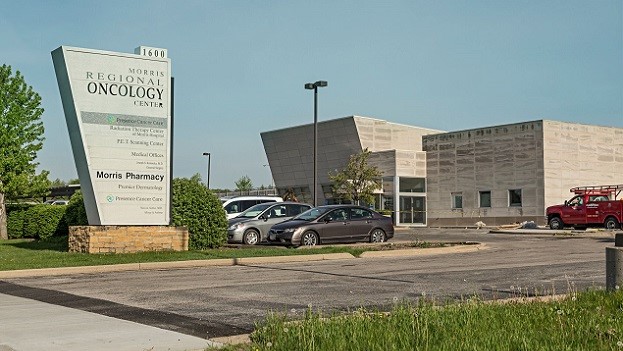 1600 W. Rte. 6 in Morris, IL, part of a four-building medical office portfolio, called the JOHA Cancer Center portfolio and located across suburban Chicago, bought by Franklin, TN-based Community Healthcare Trust from a partnership of physicians associated with Joliet Oncology Hematology Associates.
1600 W. Rte. 6 in Morris, IL, part of a four-building medical office portfolio, called the JOHA Cancer Center portfolio and located across suburban Chicago, bought by Franklin, TN-based Community Healthcare Trust from a partnership of physicians associated with Joliet Oncology Hematology Associates.
CHICAGO—The buying spree in the medical office sector continued through the first half of 2018, with $1.87 billion in sales nationally, according to a mid-year medical office report from Avison Young's Chicago office. There were 160 properties sold, totaling 6.48 million square feet, through the end of June.
And although major REITs recently slowed down their acquisitions in the sector, largely due to uncertainty over interest rates, the prospect of gaining a foothold in one of the nation's most stable asset classes has attracted new groups to medical office.
“The buyer pool continues to grow, and overall, the appetite is still very strong throughout the country for quality medical office buildings,” Mike Wilson, principal with Avison Young, tells GlobeSt.com.
REITs did make a big push into the sector. During the past 24 months, three of the top four buyers—accounting for 226 property acquisitions totaling $5.64 billion— were REITs. But private equity firms such as Harrison Street Real Estate Capital, which purchased 52 assets for a total of $1 billion, have moved into the space in recent years.
And foreign buyers have also emerged as important players. In the first half of 2018, German investors spent $341 million, the most of any other group, while buyers from Hong Kong ranked number two with $116 million, followed by the UK, with $75 million.
The volume of sales in 2018 so far is well off the pace set in 2017, according to Avison Young's report. Sales volume for 2017 was $10.4 billion, but Wilson says “any lack of velocity is more supply driven than demand driven.” And the heavy volumes of trades in the past few years has shrunk the available supply. For example, Healthcare Trust of America, a public REIT, acquired Duke Realty's medical office portfolio in 2017 for $2.75 billion. The 78 properties contained about 6.1 million square feet of leasable space.
Another obstacle is that about 50% of the nation's medical office space is owned by hospital systems, groups that tend to be conservative and more likely to hold onto such property for extended periods, Wilson says. Therefore, even if large amounts of new construction materialized, it would not guarantee a healthy supply for investors.
He expects buyers' interest to continue. The economy has been growing since at least 2009, making it one of the longest economic expansions in history, and many investors want safe places to park their money in case things go south. And few if any sectors can match healthcare's record when it comes to downturns. In the worst periods of the latest recession, Wilson says this sector's occupancy rate never fell below 90%. And coupled with the growth in the number of Americans 65 or older, “people are going to stick with medical office whether the economy is strong or weak.”
© 2025 ALM Global, LLC, All Rights Reserved. Request academic re-use from www.copyright.com. All other uses, submit a request to [email protected]. For more information visit Asset & Logo Licensing.








